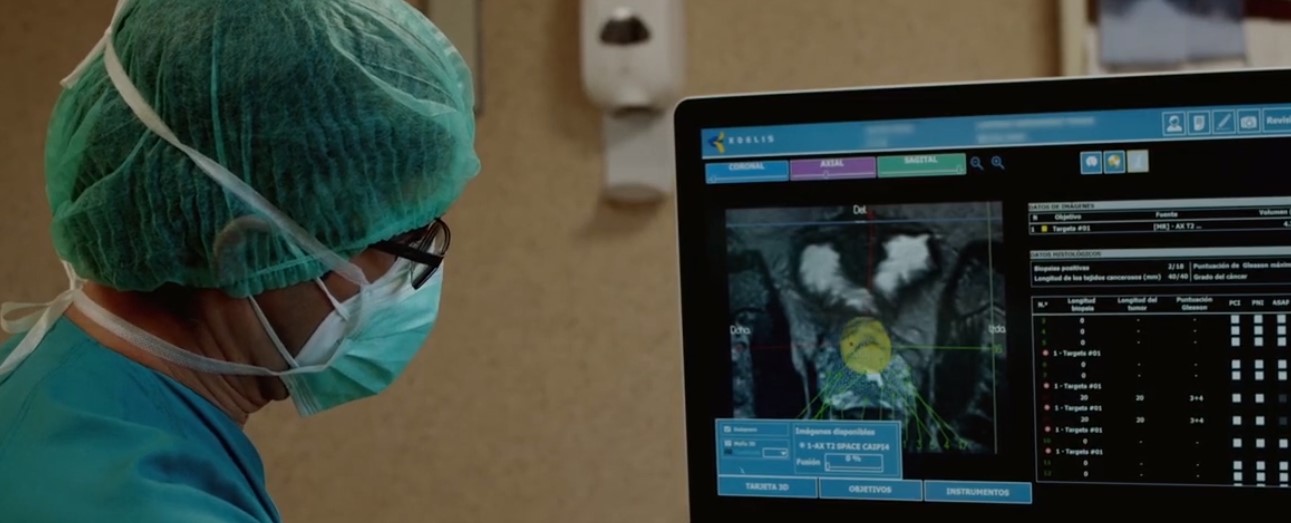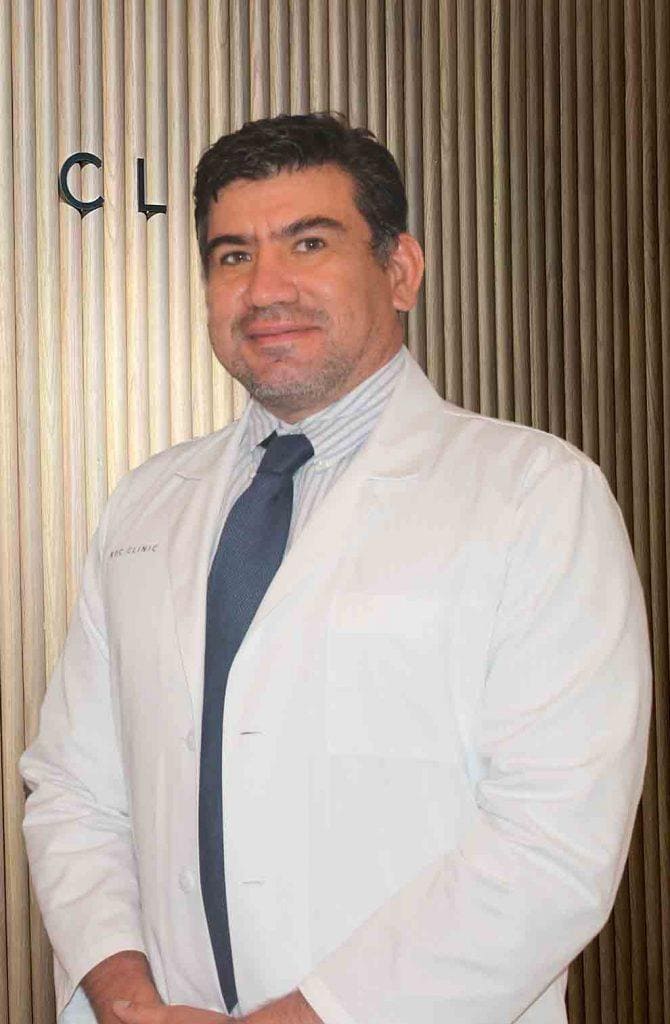Fusion Prostate Biopsy
Prostate cancer is the most common malignant tumor in men. Fortunately, it has a high cure rate if diagnosed early and treated appropriately.


What is Fusion Prostate Biopsy?
- Accurate detection and analysis.
- Safer.
- Fewer complications: infection, rectoragia and others.
- It largely avoids false negatives and retesting.
- It allows planning a focal therapy.
- More expensive.
- Requires operating room.
- It must be performed by a highly skilled team.
Fusion biopsy requires a highly specialized team with a high level of experience, as well as the latest technology. For this reason, we use the KOELIS device to carry out this diagnostic test.
At ROC Clinic we have performed more than 700 fusion biopsies, including in patients with a PSA of less than 1. Also, committed to the training of other professionals, we are teachers in the "FusionROC" prostate fusion biopsy program, carried out at the HM Sanchinarro University Hospital.
+400
In patients with a PSA of less than 1
Teachers in the fusion prostate biopsy program -FusionROC- in HM Sanchinarro
Newsof ROC Clinic in Fusion Prostate Biopsy
Research
Da Vinci and Hugo RAS Platforms for robot-assisted partial nephrectomy: a preliminary prospective comparative analysis of the outcomes.
They ask us in the Consultation
What complications can occur in a prostate fusion biopsy?
A fusion biopsy is a very safe and accurate test and usually has fewer complications such as infection or rectoragia.
I have had several prostate biopsies and all have been negative but my PSA keeps going up, could fusion biopsy be the definitive test to rule out cancer?
If, despite negative repeat prostate biopsies, there is still clinical suspicion of prostate cancer, multiparametric magnetic resonance imaging will provide information on the existence or not of a tumor and will allow us to take tissue from the affected area.
If prostate cancer does not produce symptoms, when should I have such a diagnostic test?
From the age of 40 onwards, all men should have a prostate check-up since it is very common to suffer from prostate problems from that age onwards. If during these check-ups, there is any suspicion of prostate cancer, we will proceed to more exhaustive tests.
How should I prepare before having a fusion biopsy?
Tell your doctor about any medications you take and your allergies. You may have to stop taking anticoagulants during the previous days and take some antibiotics before the test. It is advisable to eat a light meal before the test. You should also remove any metal objects you are carrying and report any previous surgeries or metal implants such as pacemakers, aneurysm clips, or joint replacements.
Team of the Fusion Prostate Biopsy Unit


 +34 912 627 104
+34 912 627 104 Contact
Contact












